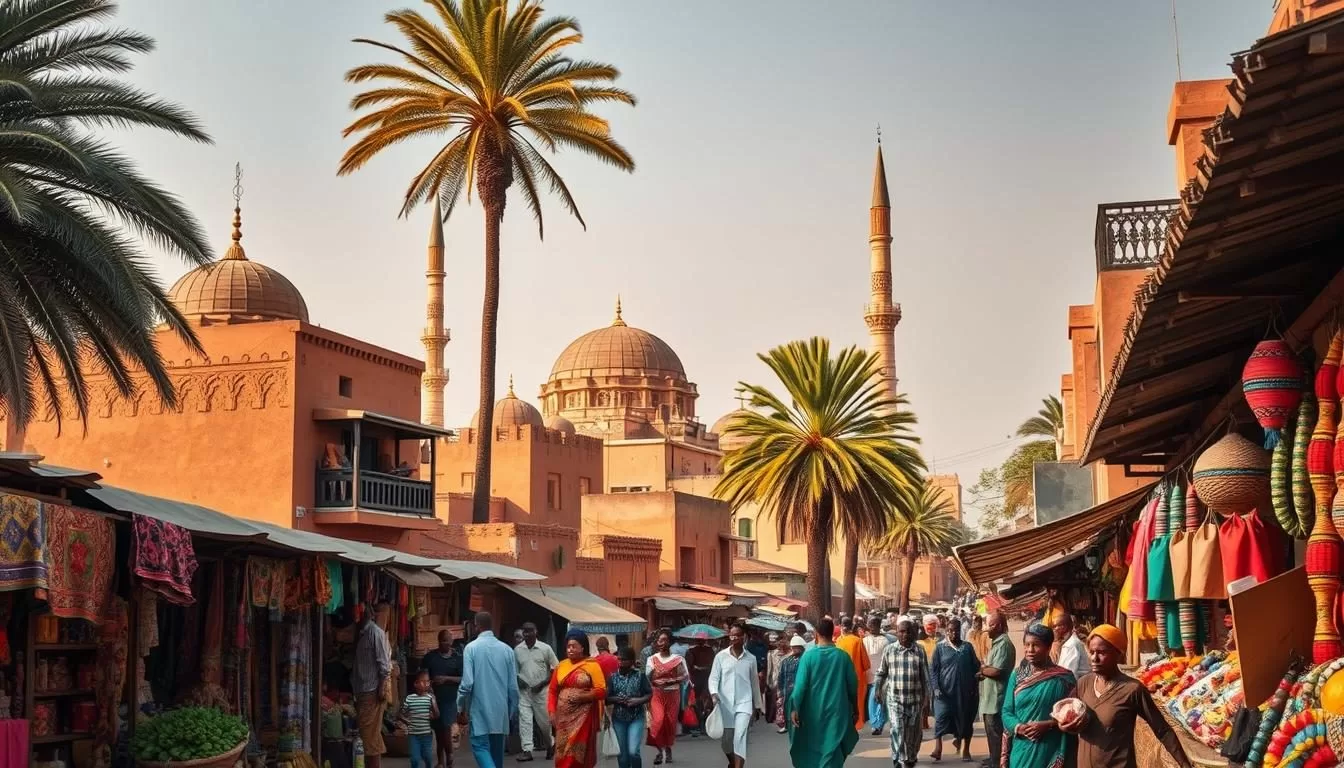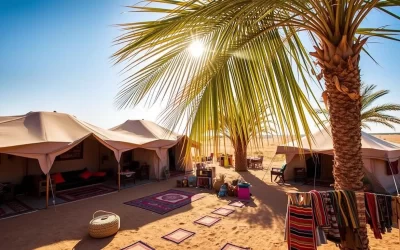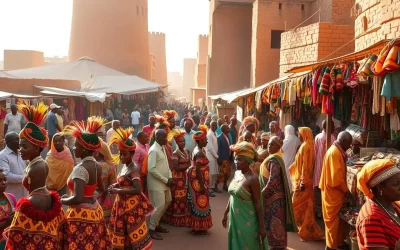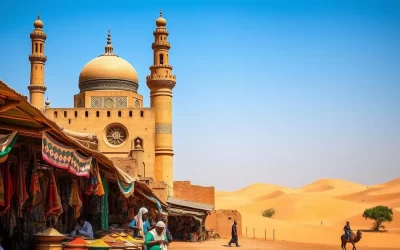✓ Accommodations✓ Flights✓ Rental Cars
Imagine a city that pulsates with energy, where the majestic Niger River creates a stunning backdrop for your adventures. You’re in the vibrant heart of Mali, where every sunrise illuminates a mosaic of cultures, histories, and daily life.
As you explore this dynamic city, you’ll discover a diverse range of experiences, from historical sites to cultural immersion opportunities. The city’s rich history has shaped it into a fascinating destination, offering adventure and excitement for visitors.
With its unique blend of culture and natural beauty, you’ll find that this West African capital is a must-visit destination. Get ready to navigate the best attractions and make the most of your time in this captivating city.
Discovering Bamako: Mali’s Vibrant Capital
As you step into Bamako, Mali’s bustling capital, a world of vibrant culture unfolds. Nestled along the banks of the Niger River, Bamako tells a story that spans centuries, from its humble beginnings as a seasonal settlement to its rise as a thriving metropolis.
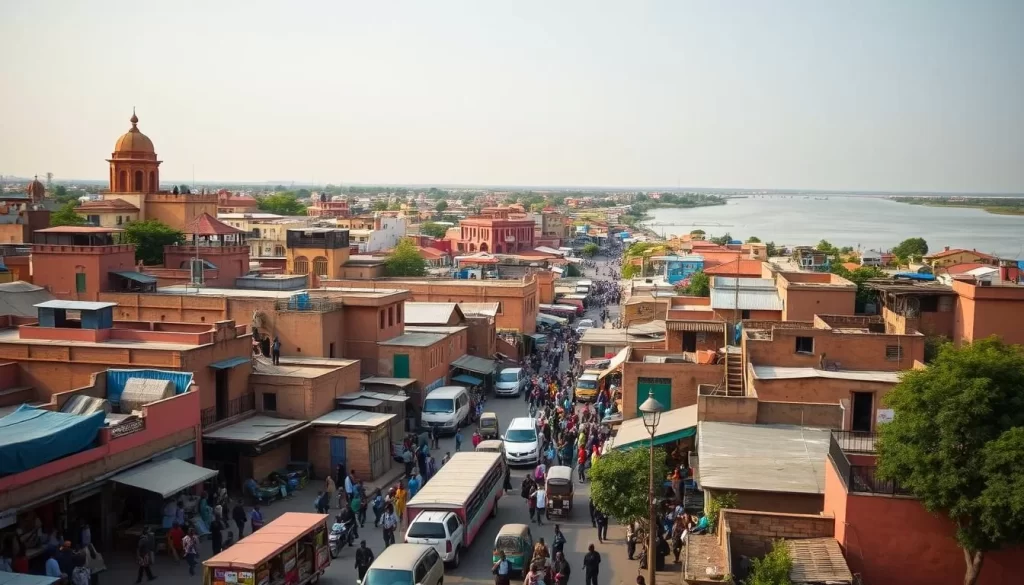
A Brief History of Bamako
Bamako’s history is a fascinating tale of resilience, culture, and transformation. Originally, it served as a safe haven for traders and travelers due to its strategic location by the Niger River. In 1883, Bamako came under French control and quickly evolved into a significant administrative center with the construction of railways and improvement of infrastructures. With independence in 1960, Bamako symbolized a new beginning, surging development and population growth.
The city‘s past is marked by its transformation from a small trading post to the vibrant capital city of Mali it is today. Its strategic location has shaped its history and development, making it an important crossroads for trade and culture.
When to Visit Bamako
The best time to visit Bamako depends on the climate. The city experiences a distinct dry season from March to June, a rainy season from July to September, and a cooler period from October to February. Understanding these climate patterns can help you plan your trip and make the most of your time in this vibrant city.
Getting Around the City
Navigating Bamako can be an adventure. You can use taxis and “sotrama” minibuses for a local experience or hire private drivers for day trips. As you explore the city, you’ll discover how Bamako has transformed since independence, becoming the political, economic, and cultural center of Mali while retaining its unique character and life.
Understanding the layout of Bamako, which has developed around the Niger River, will help you navigate its distinct neighborhoods, each with their own atmosphere and attractions.
National Museum of Mali
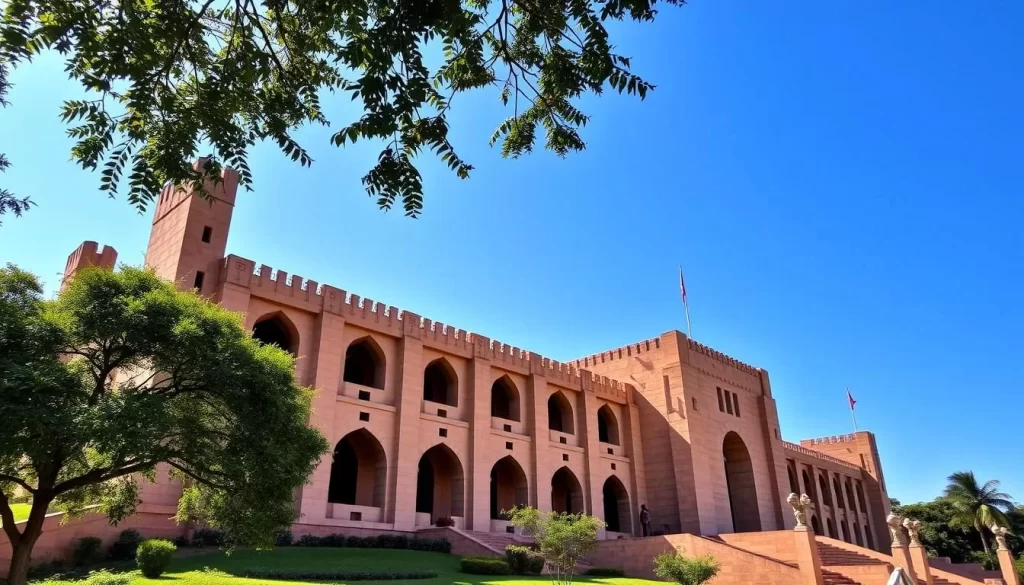
As a significant cultural institution in West Africa, the National Museum of Mali is a must-visit destination. The museum is a treasure trove of Mali’s rich cultural heritage and history. It showcases the country’s diverse cultural landscape through various exhibits and collections.
Exhibits and Collections
The National Museum of Mali features an impressive collection of artifacts that tell the story of Mali’s rich heritage. You’ll explore archaeological treasures, traditional textiles, musical instruments, and artifacts that span Mali’s history from prehistoric times to the present. The exhibits include the famous Timbuktu manuscripts, which are some of the world’s most valuable historical documents.
The museum’s exhibits are thoughtfully curated to highlight the unique traditions and contributions of Mali’s diverse ethnic groups. This provides visitors with a deeper understanding of the country’s cultural significance.
The Museum Gardens
The museum’s beautiful gardens offer a peaceful retreat from the bustling city. With beautiful landscaping and outdoor sculptures, the gardens complement the indoor collections, creating a serene escape where culture and nature merge. The gardens are an integral part of the museum experience, making it a special place to visit.
Explore the Grand Mosque of Bamako
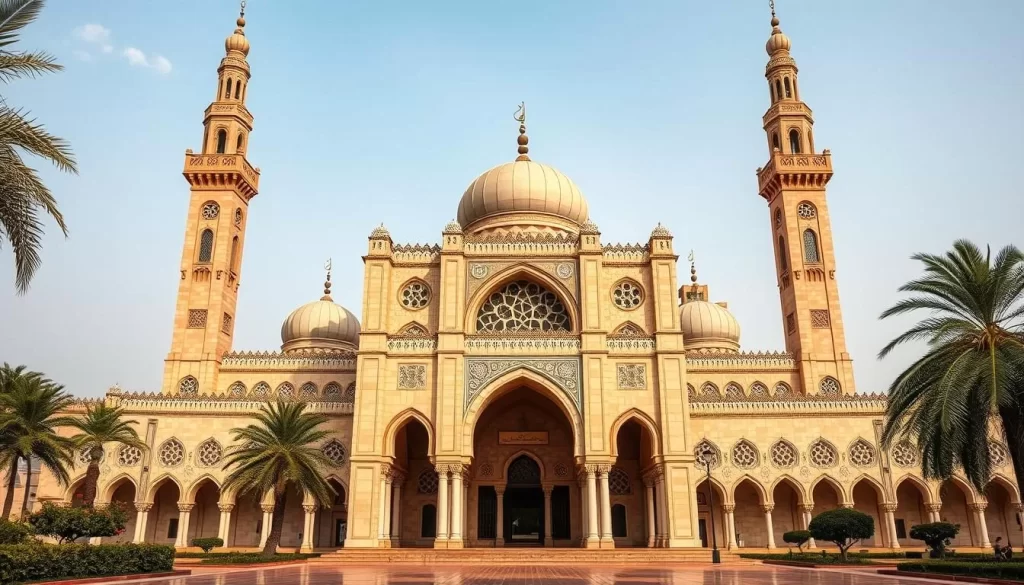
Bamako’s Grand Mosque is a striking example of modern Islamic architecture, blending traditional Sudano-Sahelian elements with contemporary influences. Built in the 1970s with funding from Saudi Arabia, the mosque’s design compares more favorably to buildings found in the Middle East than those seen throughout Bamako and Mali.
Architectural Highlights
The Grand Mosque’s architecture is a notable blend of styles, creating a striking contrast to the mud-brick mosques found elsewhere in Mali. Its design reflects a mix of traditional and modern elements, making it a significant place of interest for visitors. The mosque’s buildings are a testament to the city’s rich Islamic heritage.
The mosque is especially lively during prayer times and Islamic festivals, offering a glimpse into the daily life of Bamako’s predominantly Muslim population.
Visitor Information
While non-Muslim visitors may not enter the prayer hall, the exterior and surrounding area are worth exploring for their vibrant atmosphere. To respect the site, visitors should dress modestly and be mindful of local customs. The Grand Mosque is an important religious site, and understanding its significance can enhance your appreciation of Bamako’s cultural landscape.
The area surrounding the Great Mosque offers opportunities to observe local life and perhaps engage with friendly residents who are often willing to share insights about their faith and culture.
Markets and Shopping Experiences
As you wander through the vibrant streets of Bamako, the markets beckon with a kaleidoscope of colors, sounds, and aromas. The city’s markets are a reflection of its rich cultural heritage and daily life.
Grand Marché
The Grand Marché in Bamako is a shopper’s paradise, offering a wide range of goods from fresh produce to traditional Malian textiles and handicrafts. As you navigate the narrow aisles, you’ll be surrounded by the sights, sounds, and smells of city life.
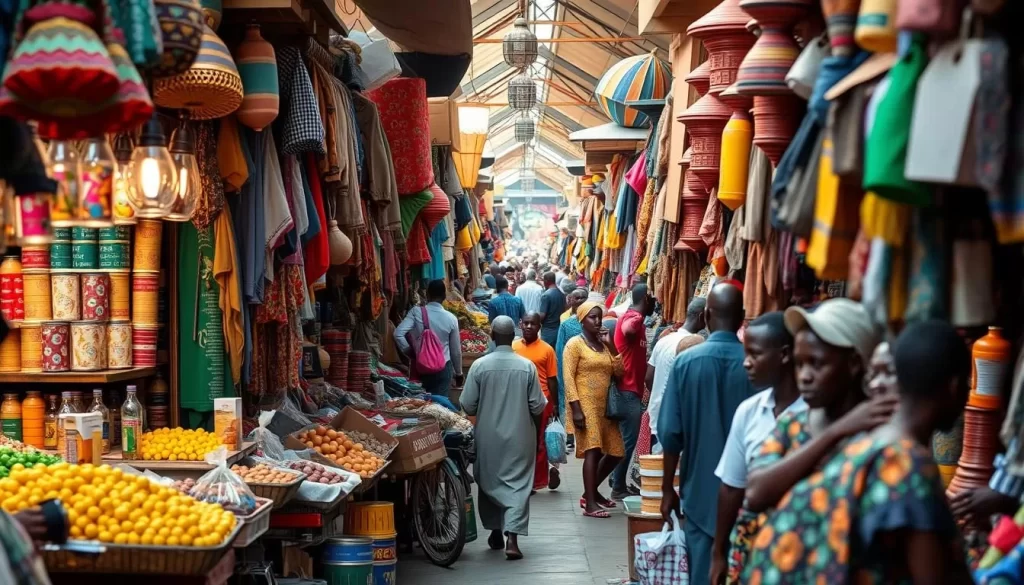
Artisan Market
The Artisan Market is a haven for those looking for authentic Malian crafts, including bogolan (mud cloth), jewelry, leather goods, and wooden sculptures. Skilled artisans create and sell these traditional items, giving you a glimpse into the country’s rich cultural heritage.
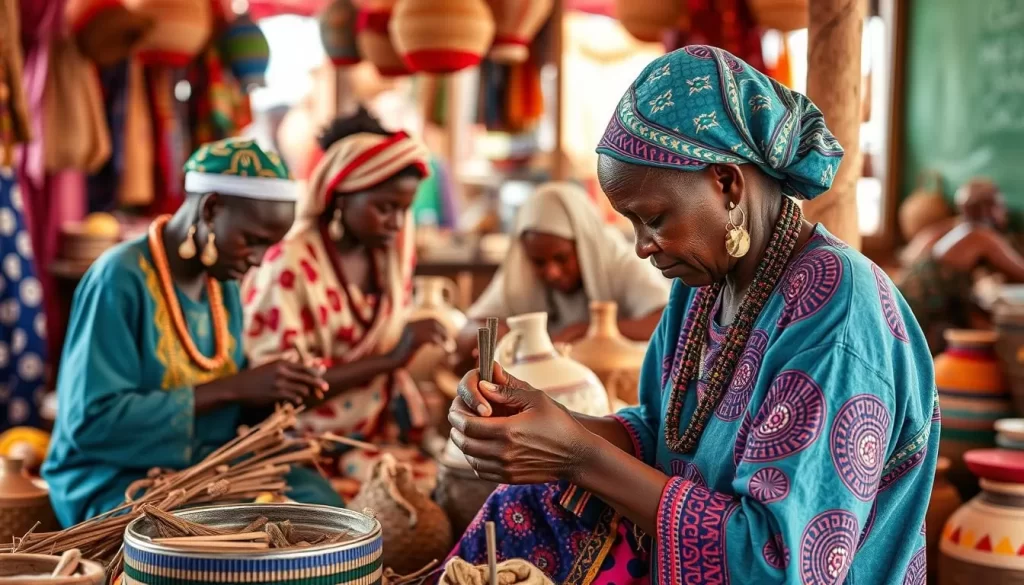
Shopping Tips
To make the most of your shopping experience in Bamako’s markets, it’s essential to know how to bargain respectfully and identify authentic handmade items. Be prepared to haggle, and don’t be afraid to walk away if the price isn’t right. By doing so, you’ll be able to find unique souvenirs and experience the local culture firsthand.
Niger River Adventures

Embark on a serene journey along the Niger River, where the vibrant city life of Bamako meets the tranquility of Africa’s third-longest river. A boat trip on the Niger River is a peaceful way to see Bamako from a different perspective, offering a unique blend of urban and natural landscapes.
Sunset Cruises
Sunset cruises on the Niger River are particularly magical, offering stunning views of the sky changing colors over the water. As the day comes to a close, the riverbanks come alive with the chatter of markets and the laughter of children playing, creating a truly unforgettable experience.
The silhouettes of fishermen against the setting sun add a timeless quality to the scene, making for a memorable trip.
Fishing Villages
Along the riverbanks, you’ll discover small fishing villages where life continues much as it has for generations. These villages offer authentic glimpses into traditional Malian riverside life, providing a unique perspective on the local culture and way of life.
As you cruise along the Niger River, you’ll witness the daily life of the people living along its banks, from children playing to fishermen at work, creating a lasting impression of the city and its people.
Bamako, Mali: Best Things to Do – Top Picks for Nature Lovers
For nature lovers, Bamako is a treasure trove of unexpected delights. The city offers a unique blend of urban excitement and natural serenity, making it an exciting destination to explore.
Parc National du Mali

The Parc National du Mali is a large urban park that offers a blend of natural landscapes and modern recreational facilities. With its 17 hectares of beautifully landscaped gardens, walking paths, and recreational areas, it’s one of the best places to visit for nature lovers. You can escape the city’s heat and noise in this oasis of greenery, where you can relax, exercise, and enjoy outdoor activities.
The park frequently hosts cultural events and concerts, adding to its vibrant atmosphere. It’s a great spot to observe local life in a relaxed setting, making it an ideal location for visitors looking to experience the authentic Bamako.
Point G Hill
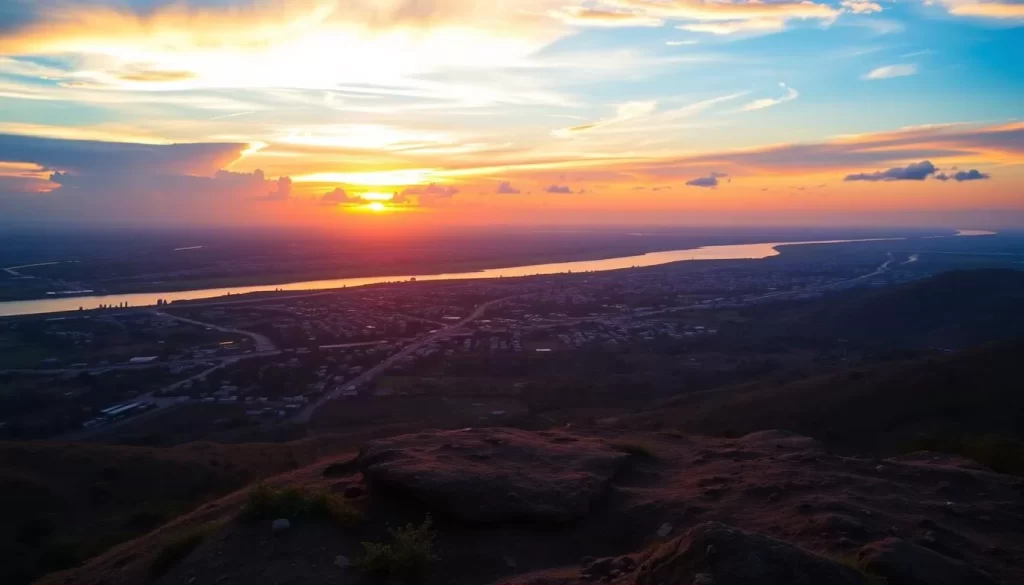
Point G Hill provides breathtaking panoramic views of Bamako and the Niger River, making it one of the most picturesque spots in the city. As you climb to the top, you’ll be rewarded with stunning vistas, especially at sunset when the city lights begin to sparkle. The hill is also home to ancient rock paintings and a hospital built by the French colonial administration, adding a historical dimension to this natural attraction.
You’ll appreciate the opportunity to explore this unique blend of natural beauty and historical significance, making Point G Hill a must-visit destination in Bamako.
Cultural Experiences in Bamako
Cultural experiences in Bamako offer a deep dive into the heart of Mali’s heritage. The city is alive with vibrant music, traditional dance, and historical landmarks.
Bamako Cathedral
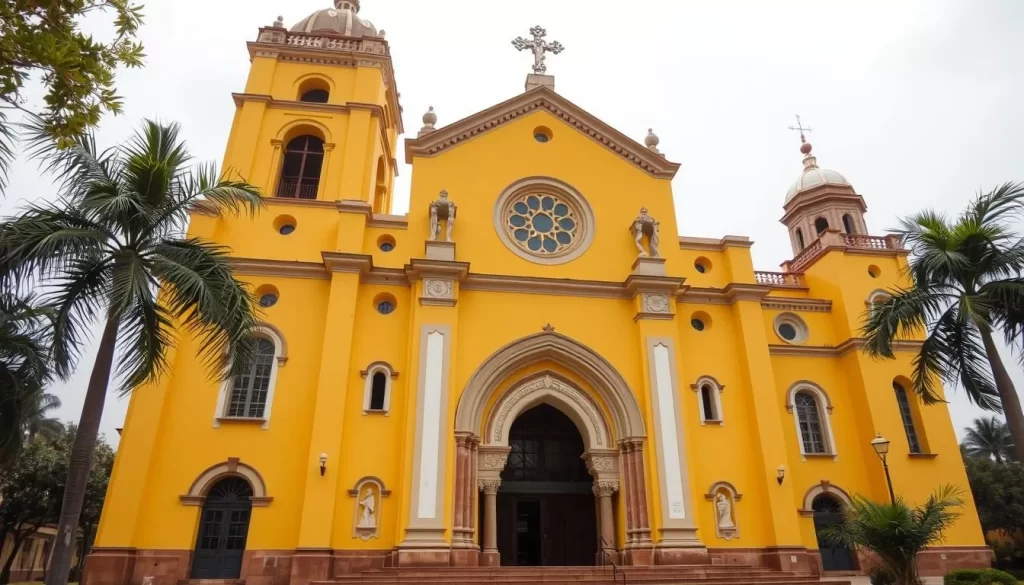
The Bamako Cathedral is a striking landmark with its bright yellow façade and impressive architecture. It stands as a symbol of the city’s religious diversity and tolerance. Inside, the peaceful ambiance provides a stark contrast to the busy streets outside.
Traditional Dance and Music
In Bamako, music is the lifeblood, permeating the city’s veins. You’ll discover why Mali is considered the birthplace of the blues as you explore Bamako’s vibrant music scene, where traditional sounds blend with contemporary influences.
The city celebrates its rich cultural heritage through various performances and events. You’ll have opportunities to experience traditional dance performances that showcase Mali’s culture and traditions, with movements and rhythms passed down through generations.
- You’ll learn about the best venues in town to experience live music, from traditional performances to modern fusion.
- The cultural experiences available in Bamako offer you a deeper understanding of Mali’s soul, connecting you to the heart of what makes this country so special.
- Participating in these cultural activities can create meaningful connections with local people who are often proud to share their traditions and heritage with interested visitors.
- Music is not just entertainment in Mali but a way of preserving history and cultural heritage.
Food and Dining in Bamako
As you explore Bamako, you’ll discover that the city’s food scene is a window into the cultural life of Mali, with a focus on traditional cuisine and fresh ingredients. The city’s location along the Niger River has given rise to a vibrant food culture, with numerous restaurants offering local and international cuisine.
Traditional Malian Cuisine
Traditional Malian cuisine is characterized by staples like rice, millet, and sorghum, complemented by flavorful sauces such as tigadegena (peanut sauce) and mafe (meat stew). You’ll find that food in Bamako is more than sustenance—it’s a way to connect with local people and experience the rich cultural heritage.
The streets of Bamako are a culinary mosaic, where the aromas of street food stalls mingle with the scents of open-air markets. From hearty flavors to fresh dishes, Bamako’s cuisine invites exploration. It’s a place where food tells the story of a people, rich in diversity and bound by tradition.
Best Riverside Restaurants
The riverside restaurants in Bamako offer a perfect combination of delicious cuisine and scenic views, making them ideal spots to relax after a day of exploration. Dining by the river, especially in the evening, provides a memorable experience with the city lights reflecting on the water. It’s the perfect setting for a romantic dinner or a relaxed meal with friends.
Some of the best places to visit include riverside restaurants that serve fresh fish from the Niger River, prepared in traditional Malian style. You’ll have the opportunity to try local specialties in a beautiful setting, enjoying the best of Bamako’s culinary scene at your own pace and time.
Day Trips from Bamako
As you explore the vibrant city of Bamako, you’ll discover that it’s an ideal base for various exciting day trips. The surrounding regions offer a mix of natural beauty, cultural experiences, and traditional lifestyles, making Bamako a great starting point for your adventures.
Siby and the Arch of Kamadjan
Just 50 kilometers from Bamako lies the charming town of Siby, known for its stunning landscapes and the sacred Arch of Kamadjan, a natural rock formation revered by locals. A day trip to Siby offers a unique blend of natural beauty and cultural significance.
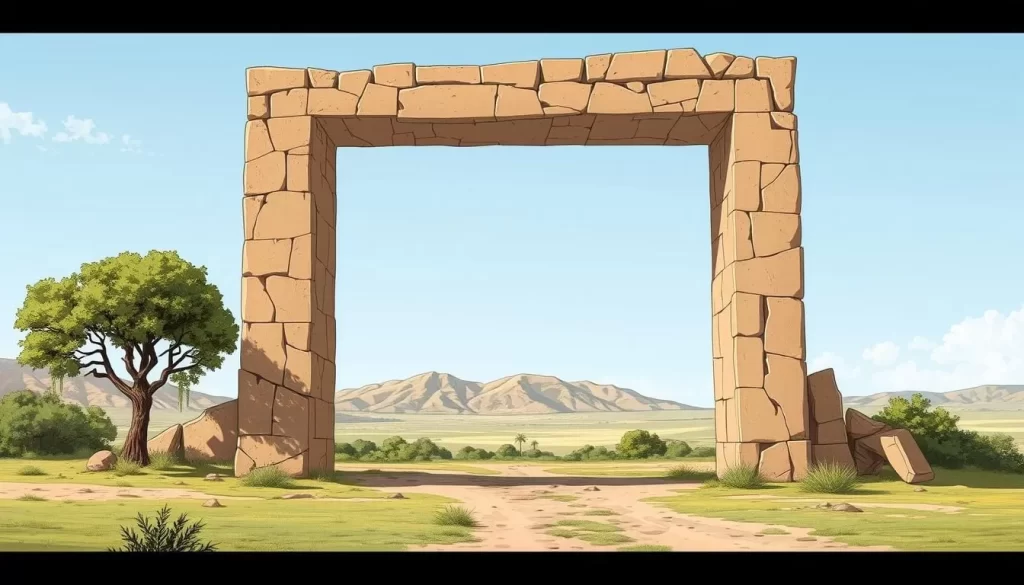
Visitors can explore the arch, learn about its cultural importance, and enjoy the scenic views of the surrounding area. This trip is perfect for those looking to experience the authentic beauty of Mali’s landscapes.
Selingue Dam
Another fascinating day trip from Bamako is to the Selingue Dam, where you can enjoy a scenic boat ride and visit traditional fishing villages. This trip provides a glimpse into rural Malian life and the opportunity to appreciate the country’s natural beauty.
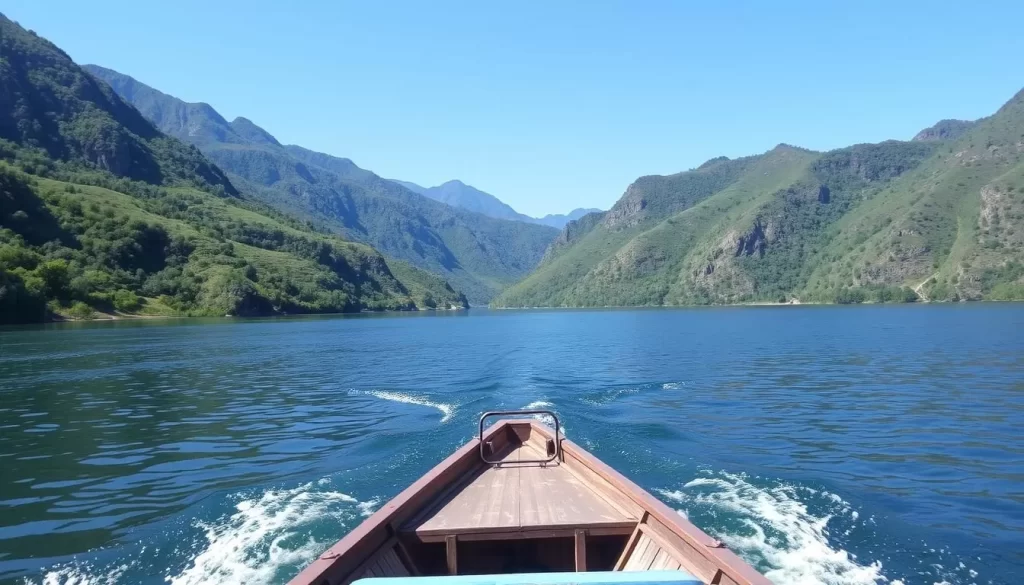
Whether you choose to visit Siby or Selingue Dam, you’ll have the chance to experience the diversity of Mali’s landscapes and cultures. With Bamako as your base, you can easily arrange these day trips through tour operators or by hiring a private driver, allowing you to make the most of your time in this vibrant region.
Conclusion: Making the Most of Your Bamako Adventure
Your adventure in Bamako comes to an end, but the memories and experiences you’ve gathered will stay with you forever, a testament to the city’s captivating charm. As you reflect on your journey, you’ll realize that Bamako’s best places to visit have showcased the heart and soul of Mali, offering a rich tapestry of cultural and historical experiences.
The vibrant city of Bamako is a treasure trove of experiences, from its historical sites to its cultural attractions. By engaging with local people, you’ve not only enriched your travel experience but also gained a deeper understanding of the city’s unique rhythm and character. Whether you’re spending a few days or using Bamako as a base to explore more of Mali, the best way to experience this city is with an open heart and mind.
As you leave Bamako, you’ll carry with you wonderful memories of this fascinating city and its heart, a place that has touched your soul. You’ll understand why many visitors consider Bamako one of the best places to experience authentic West African culture.
The above is subject to change.
Check back often to TRAVEL.COM for the latest travel tips and deals.
